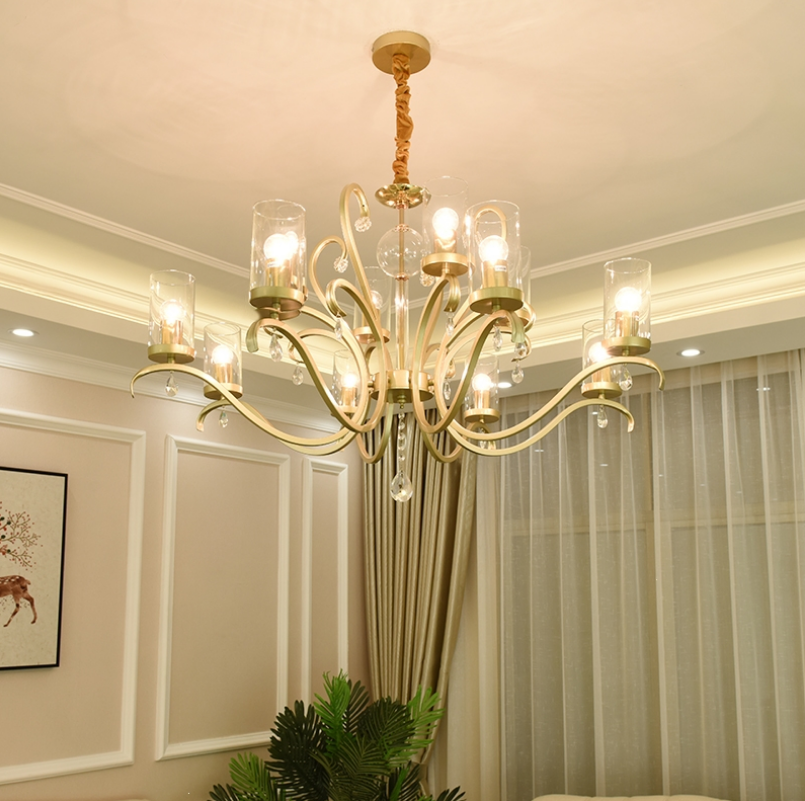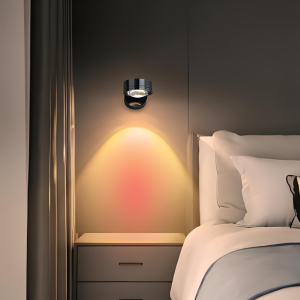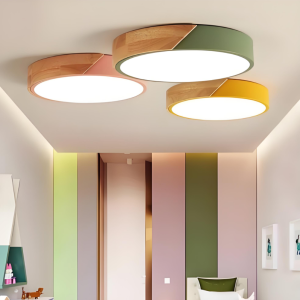
Adding Elegance with a Stunning Chandelier
Chandeliers are a type of lighting fixture that is suspended from the ceiling and typically features multiple arms or branches with lights attached. They are often ornate and decorative, adding a touch of elegance and sophistication to any space. Chandeliers have a long history and have been used for centuries to illuminate grand spaces such as palaces, churches, and ballrooms.
The word “chandelier” comes from the French word “chandelle,” which means candle. In the past, chandeliers were primarily lit by candles, but with the advent of electricity, they began to be fitted with light bulbs instead. Today, chandeliers come in a wide variety of styles, sizes, and designs to suit different tastes and interior decor styles.
Chandeliers play an important role in home decor as they not only provide functional lighting but also serve as a statement piece and focal point in a room. They can instantly elevate the overall look and feel of a space, adding a touch of glamour and luxury. Whether you choose a traditional crystal chandelier or a modern minimalist design, chandeliers have the power to transform any room into a stunning and inviting space.
Choosing the Right Chandelier for Your Home
When choosing a chandelier for your home, there are several factors to consider to ensure that you select the right one that fits your space and style. One of the most important factors is the size and scale of the chandelier. You want to make sure that the chandelier is proportionate to the room it will be placed in. A small chandelier in a large room may get lost, while a large chandelier in a small room may overwhelm the space.
Another factor to consider is the style and design of the chandelier. Chandeliers come in various styles such as traditional, modern, and contemporary. Traditional chandeliers often feature intricate details and crystal accents, while modern chandeliers have clean lines and minimalist designs. Contemporary chandeliers combine elements of both traditional and modern styles, resulting in a unique and eclectic look.
Additionally, consider your lighting needs and preferences. Do you want a chandelier that provides bright, ambient lighting or one that creates a soft, romantic glow? Some chandeliers come with dimmer switches, allowing you to adjust the brightness according to your mood and needs. It’s also important to consider the type of bulbs used in the chandelier and their energy efficiency.
The Impact of Chandeliers on Home Decor
Chandeliers have a significant impact on home decor as they can enhance the overall look and feel of a room. They serve as a focal point, drawing attention and creating a sense of drama and grandeur. A well-placed chandelier can instantly transform a plain and ordinary space into a luxurious and stylish one.
One way chandeliers gurudecora enhance home decor is by adding elegance and sophistication to a space. Whether it’s a traditional crystal chandelier or a modern geometric design, chandeliers have a way of elevating the aesthetic of any room. They exude a sense of luxury and opulence, making them perfect for formal spaces such as dining rooms and entryways.
Chandeliers also have the power to create a sense of balance and harmony in a room. By choosing a chandelier that complements the existing decor and furniture, you can tie the entire space together and create a cohesive look. For example, a rustic farmhouse-style chandelier can add warmth and charm to a country-inspired living room, while a sleek and contemporary chandelier can add a touch of modernity to a minimalist bedroom.
Types of Chandeliers: Traditional, Modern, and Contemporary
Chandeliers come in various types and styles to suit different tastes and interior decor styles. The three main types of chandeliers are traditional, modern, and contemporary.
Traditional chandeliers are often characterized by their ornate designs and use of crystal accents. They are reminiscent of the grand chandeliers found in palaces and ballrooms. Traditional chandeliers typically feature multiple arms or branches with candle-shaped lights and are often adorned with crystal prisms or beads. They add a touch of elegance and old-world charm to any space.
Modern chandeliers, on the other hand, have clean lines and minimalist designs. They often feature sleek metal frames and geometric shapes. Modern chandeliers can range from simple and understated to bold and avant-garde. They are perfect for contemporary spaces and can add a touch of sophistication and modernity to any room.
Contemporary chandeliers combine elements of both traditional and modern styles, resulting in a unique and eclectic look. They often feature unexpected materials, such as glass, wood, or even recycled materials. Contemporary chandeliers can be bold and artistic, making them a statement piece in any room.
Examples of traditional chandeliers include the classic crystal chandelier with multiple tiers of crystal prisms, the empire-style chandelier with its cascading crystal beads, and the candle-style chandelier with its candle-shaped lights. Modern chandeliers include the Sputnik chandelier with its futuristic design, the linear chandelier with its sleek lines and multiple lights, and the drum chandelier with its fabric shade. Contemporary chandeliers include the geometric chandelier with its unique shapes and angles, the industrial-style chandelier with its exposed bulbs and metal accents, and the art deco-inspired chandelier with its bold patterns and colors.
Materials Used in Chandelier Design
Chandeliers are made from a variety of materials, each with its own unique characteristics and aesthetic appeal. The choice of material can greatly impact the overall look and feel of a chandelier. Some common materials used in chandelier design include crystal, glass, metal, and wood.
Crystal is perhaps the most iconic material used in chandelier design. Crystal chandeliers are known for their sparkling beauty and luxurious appearance. Crystal prisms and beads reflect and refract light, creating a dazzling display of colors and patterns. However, crystal chandeliers can be quite expensive and require regular cleaning and maintenance to keep them looking their best.
Glass is another popular material used in chandelier design. Glass chandeliers can range from simple and understated to intricate and ornate. They can be made from clear glass or colored glass, depending on the desired aesthetic. Glass chandeliers are often more affordable than crystal chandeliers but still offer a touch of elegance and sophistication.
Metal is a versatile material that is commonly used in chandelier design. Metal chandeliers can be made from various types of metals such as brass, bronze, iron, or stainless steel. Metal chandeliers can have a traditional or modern look depending on the design and finish. They are often more durable and long-lasting than crystal or glass chandeliers.
Wood is a less common but still beautiful material used in chandelier design. Wooden chandeliers can add warmth and natural beauty to a space. They are often handcrafted and can feature intricate carvings or details. Wooden chandeliers are perfect for rustic or farmhouse-style spaces.
When choosing the right material for your chandelier, consider factors such as durability, maintenance requirements, and aesthetic appeal. Think about how the material will complement the existing decor and furniture in your home.
How to Properly Install a Chandelier in Your Home

Installing a chandelier in your home requires careful planning and execution to ensure that it is properly secured and safely hung from the ceiling. Here are some steps to follow when installing a chandelier:
1. Turn off the power: Before starting any electrical work, make sure to turn off the power to the room where the chandelier will be installed. This can be done by flipping the circuit breaker or removing the fuse.
2. Choose the right location: Determine where you want to hang the chandelier and mark the spot on the ceiling. Make sure there is enough clearance and that the chandelier will be centered in the room.
3. Install a ceiling medallion (optional): If desired, you can install a decorative ceiling medallion before hanging the chandelier. A ceiling medallion can add an extra touch of elegance and help cover any imperfections in the ceiling.
4. Assemble the chandelier: Follow the manufacturer’s instructions to assemble the chandelier. This may involve attaching the arms or branches, installing the light bulbs, and connecting any wiring.
5. Attach a mounting bracket: Install a mounting bracket to the electrical box in the ceiling. This will provide support for the weight of the chandelier.
6. Connect the wiring: Carefully connect the wiring from the chandelier to the electrical box in the ceiling. Make sure to match the black wire (hot) with black, white wire (neutral) with white, and green or bare wire (ground) with green or bare.
7. Hang the chandelier: Lift the chandelier and carefully hang it from the mounting bracket. Make sure it is securely attached and level.
8. Test the lights: Turn on the power and test that all lights are working properly. If there are any issues, double-check your wiring connections.
Safety precautions should always be taken when installing a chandelier. If you are unsure or uncomfortable with electrical work, it is best to hire a professional electrician to install your chandelier for you.
Maintaining Your Chandelier: Cleaning and Care Tips
To keep your chandelier looking its best, regular cleaning and maintenance are necessary. Here are some tips for cleaning and caring for your chandelier:
1. Turn off the power: Before cleaning your chandelier, make sure to turn off the power to avoid any electrical accidents.
2. Protect the area: Place a drop cloth or plastic sheet underneath the chandelier to catch any falling dust or debris.
3. Remove dust and dirt: Use a soft, lint-free cloth or a feather duster to gently remove dust and dirt from the chandelier. Start from the top and work your way down, being careful not to apply too much pressure or pull on any delicate parts.
4. Clean with a solution: For more thorough cleaning, you can use a solution of mild dish soap and warm water. Dip a soft cloth or sponge into the solution and gently wipe down the chandelier. Avoid getting any electrical components wet.
5. Dry thoroughly: After cleaning, make sure to dry the chandelier thoroughly to prevent water spots or damage. Use a clean, dry cloth to wipe away any excess moisture.
6. Polish the metal parts (if applicable): If your chandelier has metal parts, you can use a metal polish specifically designed for that type of metal to restore its shine and remove any tarnish or oxidation. Follow the manufacturer’s instructions for best results.
7. Replace burnt-out bulbs: Regularly check and replace any burnt-out bulbs to ensure that your chandelier is properly illuminated.
It’s important to note that cleaning a chandelier can be time-consuming and delicate work. If you are unsure or uncomfortable with cleaning your chandelier yourself, it is best to hire a professional cleaner who specializes in chandeliers.
Creative Ways to Incorporate Chandeliers in Your Home
Chandeliers are not limited to traditional spaces such as dining rooms and entryways. There are many creative ways to incorporate chandeliers into your home decor, adding a touch of elegance and style to unexpected spaces. Here are some unique ways to use chandeliers in home decor:
1. Over a kitchen island: Hang a small chandelier over a kitchen island to add a touch of glamour and sophistication to your culinary space. This unexpected placement can create a stunning focal point and elevate the overall look of your kitchen.
2. In a bathroom: Install a small chandelier in a bathroom to create a luxurious and spa-like atmosphere. This can be particularly effective in a master bathroom or powder room, adding a touch of elegance and opulence.
3. In a walk-in closet: Transform your walk-in closet into a glamorous dressing room by adding a chandelier. Not only will it provide functional lighting, but it will also create a sense of luxury and make getting dressed feel like a special occasion.
4. In a nursery or child’s room: Add a whimsical touch to a nursery or child’s room by hanging a chandelier with playful elements such as colorful crystals or unique shapes. This can create a magical and enchanting space for your little one.
5. Outdoors: Take your chandelier outside and hang it on a covered patio or pergola. This unexpected placement can create an intimate and romantic atmosphere for outdoor entertaining.
Remember to consider the size and scale of the chandelier when incorporating it into unexpected spaces. You want to make sure that it fits the space appropriately and doesn’t overwhelm the room.
Chandeliers for Different Rooms: Living Room, Dining Room, Bedroom, and More
Different rooms in your home have different lighting needs and design considerations. Here are some tips for choosing the right chandelier for each room:
1. Living Room: The living room is often the central gathering space in a home, so you want to choose a chandelier that makes a statement without overpowering the room. Consider the size of the living room and the height of the ceiling when selecting a chandelier. A larger living room with high ceilings can accommodate a larger chandelier, while a smaller living room with lower ceilings may require a smaller or more streamlined design.
2. Dining Room: The dining room is a popular space for chandeliers as they can create a sense of elegance and drama. When choosing a chandelier for the dining room, consider the size of the dining table. The chandelier should be proportionate to the table and hang at an appropriate height. As a general rule, the bottom of the chandelier should be about 30 to 36 inches above the tabletop.
3. Bedroom: Chandeliers can add a touch of luxury and romance to a bedroom. When choosing a chandelier for the bedroom, consider the size of the room and the height of the ceiling. A larger bedroom with high ceilings can accommodate a larger chandelier, while a smaller bedroom with lower ceilings may require a smaller or more delicate design. Consider the overall style and decor of the bedroom when selecting a chandelier to ensure that it complements the existing furniture and accessories.
4. Entryway: The entryway is often the first impression guests have of your home, so you want to make it memorable. A grand and ornate chandelier can create a stunning focal point and set the tone for the rest of your home. Consider the size of the entryway and the height of the ceiling when selecting a chandelier. A larger entryway with high ceilings can accommodate a larger chandelier, while a smaller entryway with lower ceilings may require a smaller or more streamlined design.
5. Bathroom: Ch The bathroom is an essential part of any home. It is a space where individuals can take care of their personal hygiene needs, such as showering, brushing their teeth, and using the toilet. The bathroom typically includes fixtures such as a sink, toilet, and bathtub or shower. It is important for the bathroom to be clean and well-maintained to ensure a comfortable and hygienic environment for its users. Additionally, many bathrooms also include storage areas for toiletries and towels. Overall, the bathroom is a functional and necessary room in any household.


